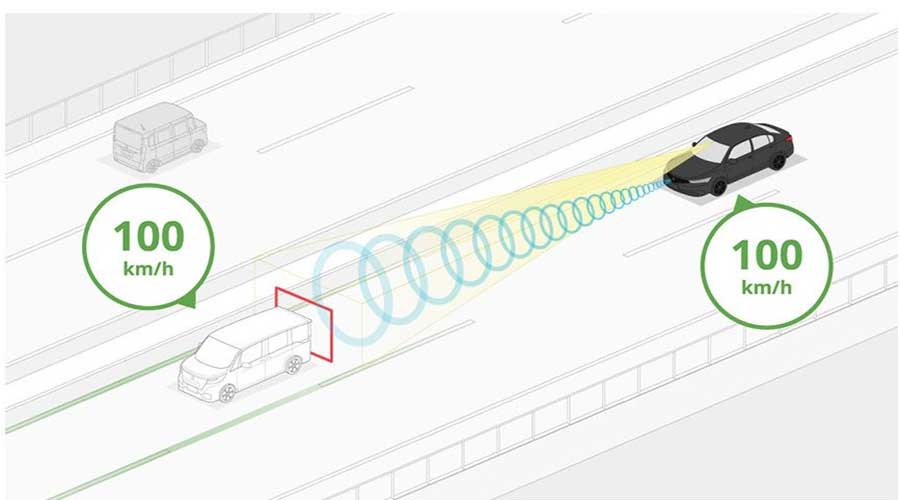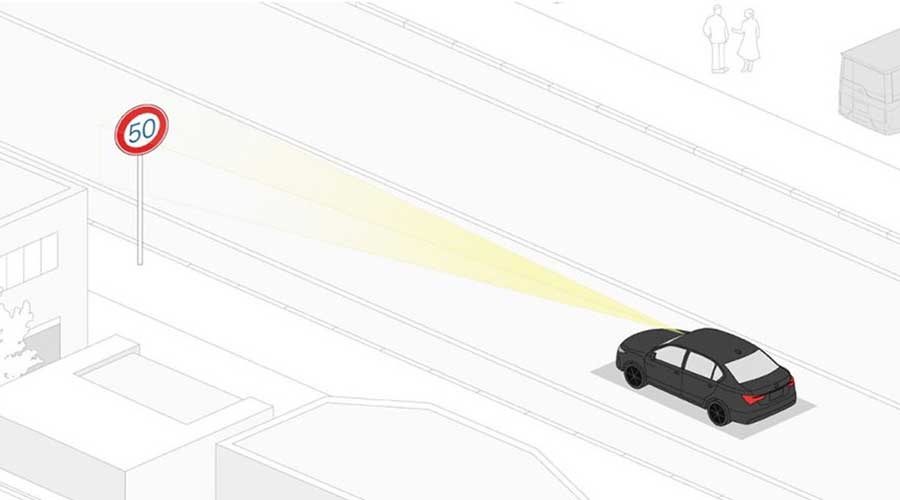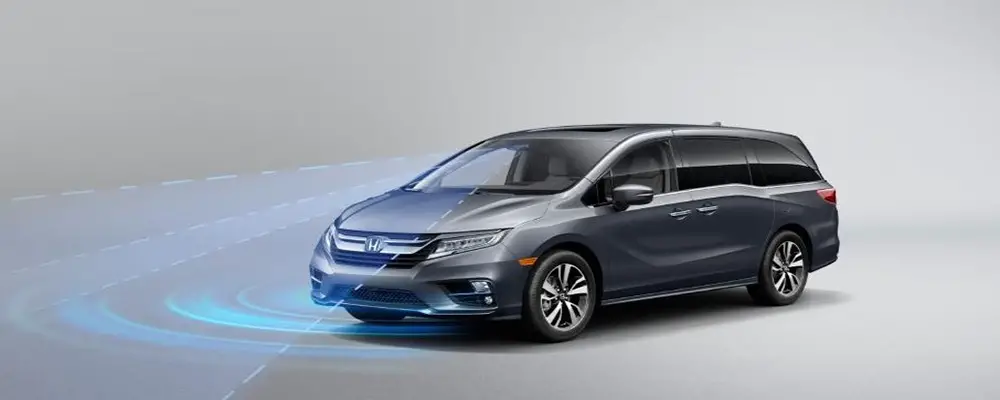What is Honda Sensing?
Honda, the Japanese automotive giant, is known for its reliability and technology. The brand came up with an incredible suite of technology called Honda sensing. The new suite comprises various driver assistance systems and safety features that help the driver while driving.
Furthermore, with advancements in new radar and lidar technology and cameras, we are now in the era of driverless cars. Honda is not staying behind. This new technology suite is taking Honda forward with the rapidly changing automotive technology landscape. We will deep dive into various technologies Honda sensing offers. As always, we will explain these technologies to you in simple language.
Honda sensing Overview
The Hondas global safety concept revolves around safety for everyone. It aims for a collision-free society where everyone on the road, including motorcyclists and pedestrians, can share the road safely. The Honda sensing is developed by analyzing various road accidents around the world. Most of them occur due to getting off the lanes on highways.
So, to tackle such situations. Honda sensing avoids direct collisions, pedestrian injuries, single-car accidents, and missing road signs.
The pedestrian collision mitigation steering system
This collision avoidance system detects pedestrians and boundary lines on the side strips, avoiding potential collision. The millimeter wave radar and the monocular camera detect pedestrians and side strips flawlessly and accurately.

Furthermore, the system then alerts the driver with audio-visual signals. The system also undertakes corrective steering maneuvers. And help the driver avoid a collision. This reduces driving stress substantially, making driving a fun activity.
The road departure mitigation (RDM) system
The RDM system keeps the vehicle in the lane. The mechanism is similar to lane keep assist. The system also works in the lines of lane centering assist.
First, the road departure mitigation system only works when the vehicle operates at speeds above 60 kmph. It provides three types of assistance to the driver. Firstly, the monocular camera on the car detects lane markings and boundaries. So, if the vehicle moves away from the lane, the system gives a visual warning on the display, and the steering wheel vibrates. Essentially, it alerts the driver in the process.
Furthermore, if the vehicle leaves the lane entirely, the system vibrates the wheel at 1.5-second intervals. It also takes control of the steering and makes corrective maneuvers. It tries to bring back the vehicle in the lane.
In addition, if the system detects the vehicle is moving too far away from the lane. The system then applies additional braking force and a corrective steering maneuver to bring the vehicle back into the lane.
The collision mitigation braking system (CMBS)
The CMBS system helps the driver to prevent collision with oncoming traffic and pedestrians. This collision avoidance system works with the help of a monocular camera and millimeter wave radar.
When the camera and radar detect the possibility of collision, the system sends an audio-visual warning to the driver. It also vibrates the accelerator pedal. Still, if the system detects collision can’t be avoided, it applies brake automatically. Similarly, if the vehicle drives away in the oncoming lane, the system alerts the driver and applies brakes if a collision is unavoidable.
False start prevention function
In false start prevention technology, the system detects obstacles ahead of time. So, if the driver suppresses the accelerator pedal accidentally, the system provides sound and visual signals. The accelerator vibrates, too, and informs the driver about a possible collision.
So, this technology prevents false suppression of the accelerator pedal and avoids collisions completely.
Adaptive cruise control with low-speed follow
Adaptive cruise control has now become a norm in the auto industry. Here, the system maintains a constant predefined distance from the vehicle ahead. This feature is beneficial in dense and congested highways with frequent traffic jams.

Hence, the system reduces the burden on the driver. It allows him to drive a vehicle in a calm environment. The radar and monocular camera detect speed and distance effectively. It also controls acceleration and braking, maintaining appropriate distance. The system can operate at various speed ranges. It can also do a low-speed follow-up in slow-moving traffic.
Lane keeping assist systems (LKAS)
The LKAS is Honda’s lane-keeping assist system, substantially reducing the driver’s burden. The system keeps the vehicle in the middle lane, reducing driving fatigue. The monocular camera plays a crucial role in this system.
The camera scans the solid and broken line markings on the highway. Then, it detects in which lane the vehicle is currently driving. So, if the vehicle is likely wandering off the lane, it alerts the driver via vibrations to the steering wheel.
This feature is helpful if the driver falls asleep on long, monotonous highway journeys. In such a scenario, it will alert the river and can avoid potential accidents.
Traffic sign recognition in Honda sensing
The system recognises traffic signs on the road and displays them to the driver. The monocular camera detects traffic signs as the vehicle moves on the road and displays them on the head-up, multi-information, or both displays.

Furthermore, the system notifies information to the driver, which is critical in urban driving, like no entry, speed limits, and no overtaking. Hence, the system assists in driver attention.
Lead car departure notification
This feature is handy in congestion or standstill traffic. The system warns you when a vehicle in front of you moves ahead. The millimeter wave radar detects when the car in front of you moves ahead from a standstill. The system alerts the driver audio visually if the driver doesn’t accelerate the vehicle forward.
Blind spot information system in Honda sensing
The blind spot detection works in accordance with the direction of the blind spot. So, it alerts the driver if it detects an obstacle on the passenger side blind spot.
Furthermore, the radars mounted on the rear bumper detect vehicles approaching from the back. Then, it notifies the driver in the side mirrors. When the driver turns on the indicator, the system automatically alerts the driver in the respective driving direction.
Lane watch
The Honda lane watch system is an added advantage in tackling blind spots. The system increases the field of vision through the camera mounted on the rearview mirrors.
The camera mounted on the side mirrors displays the car approaching from the rear quarter blindspot. Hence, it provides a wide field of vision. This particular feature is beneficial while you are changing lanes.
Multi-view camera
The camera mounted around the vehicle provides a clear view of the surroundings. It helps in making decisions faster than ever. The system also assists you while pulling over, parking, confirming the road ahead, and low visibility intersections.
The four CCD cameras on the rearview mirrors, tailgate, and front grille record continuous video. Then, the software on the board stitches them together, forming a single image. Then, the system displays the video stream on the navigation screen. This video provides a bird’s eye view of the surroundings all the time. You can also select six views. The guidance lines are calculated in real-time, and the system displays them on the screen. The calculation depends on the steering angle.
Wide-angle rearview camera
The wide-angle rearview camera system is helpful to the driver while reversing. With this camera, the driver can detect obstacles while reversing. The display switches to the rearview camera view when the driver reverses the vehicle. The three display modes are available. The normal mode shows a normal view. The wide mode shows a panoramic view, and the Top-down mode shows an overhead view.
Parking sensor system in Honda sensing
The parking sensors are a great companion when you park the vehicle. This system alerts the driver when it detects an obstacle in the surroundings while parking. The six sensors mounted on each corner and rear of the vehicle detect obstacles precisely.
In addition, the beeping sound and navigation display changes in four stages. As the obstacle comes closer, the sound starts beeping frequently with alerts on the navigation panel. The system also helps the driver navigate on narrow roads.
Backing out support
Backing-out support helps drivers while reversing from the parking space. As the driver cannot see on both sides while reversing, the system alerts the driver if there is an approaching vehicle or obstacle.
Furthermore, the radar on the rear bumper and camera detects approaching vehicles from the side. The system alerts the driver via sound and navigation screen display. Additionally, the system can also alert the driver via vibration on the accelerator pedal.
In conclusion, Honda sensing is a bunch of technologies that will keep other road users and drivers safe. The systems also support driving fun intact, minimizing stress, and maximizing comfort.
